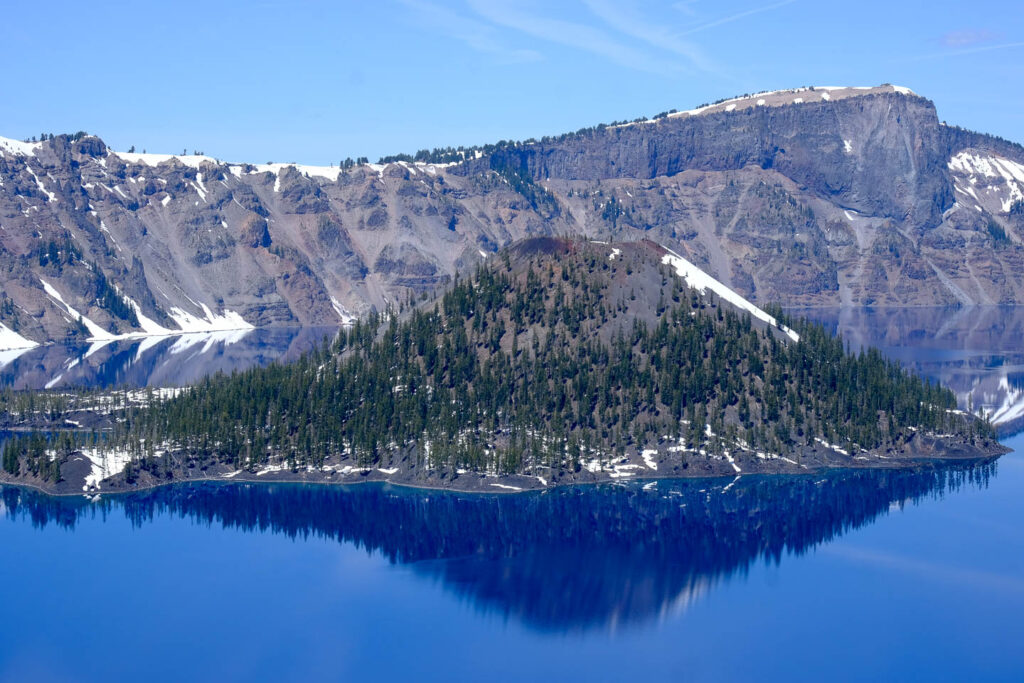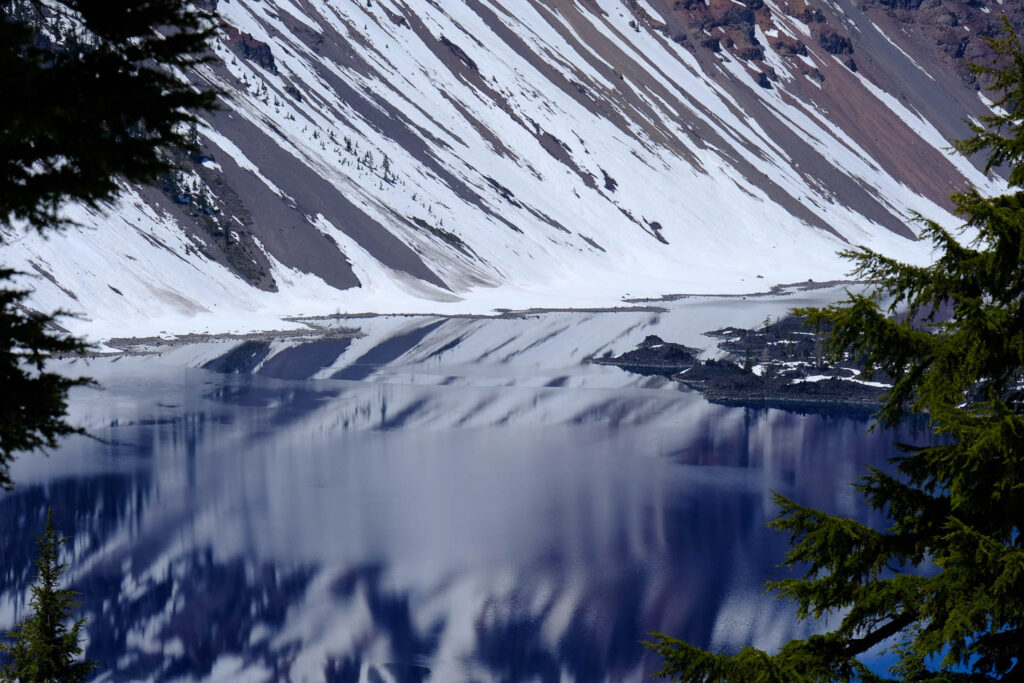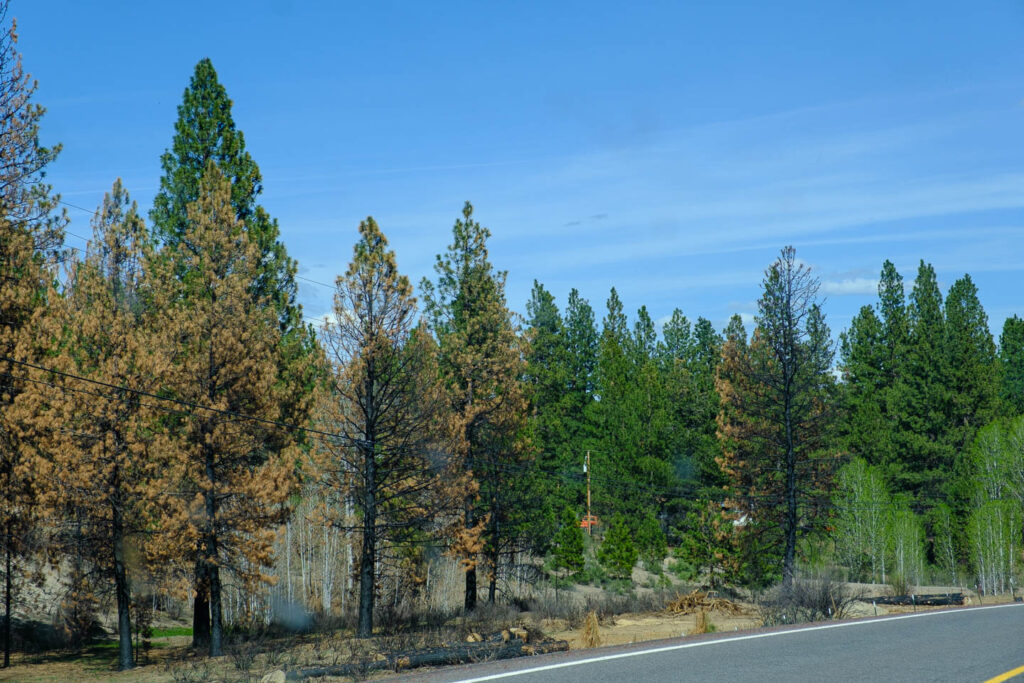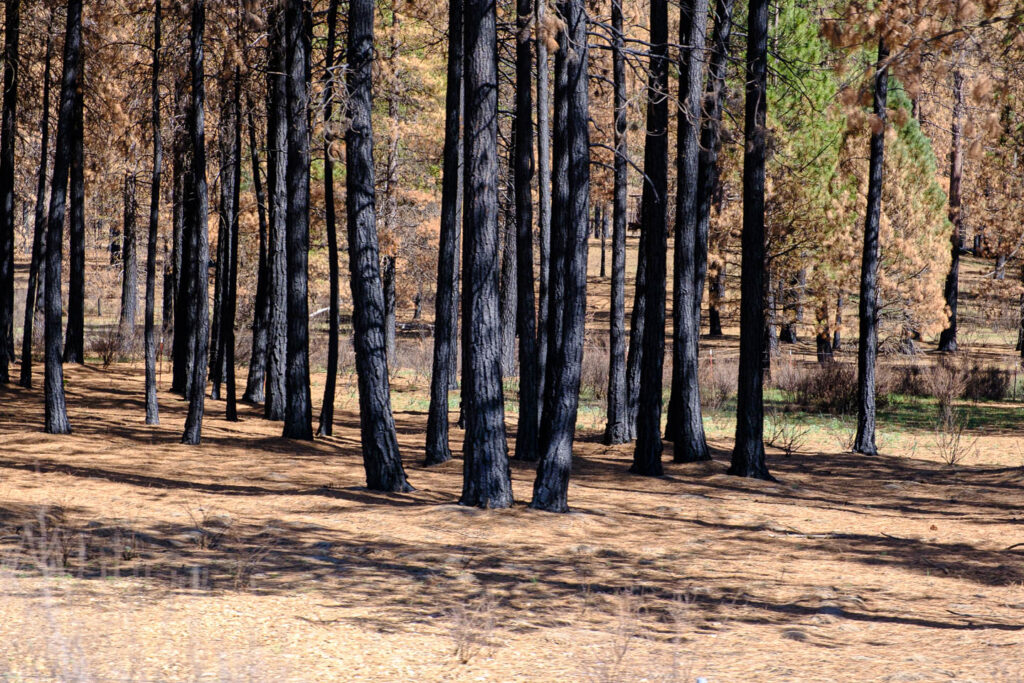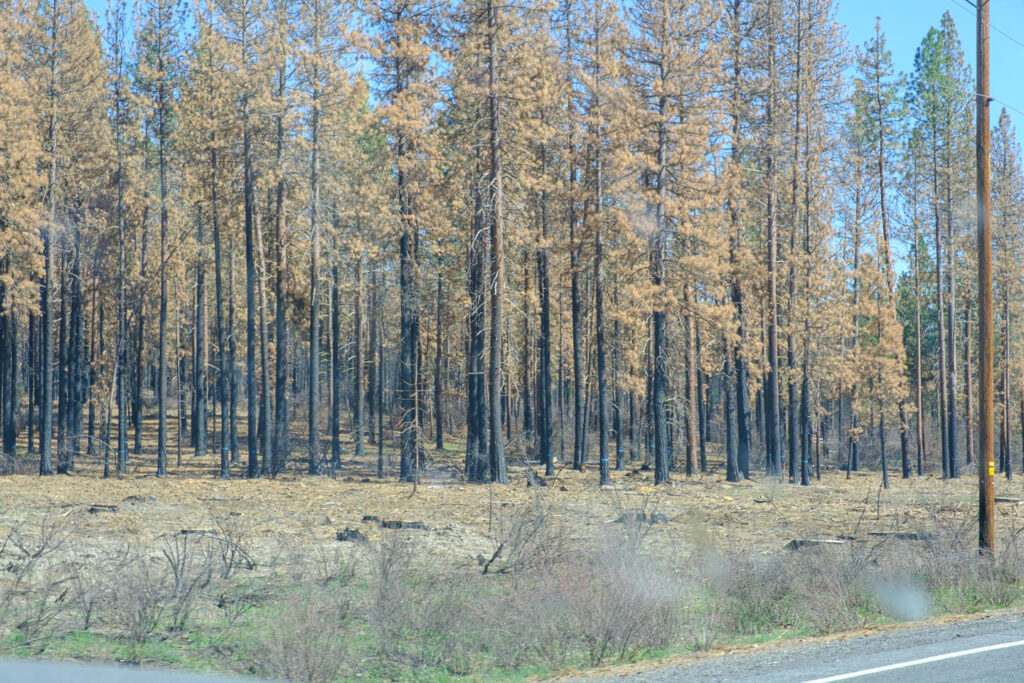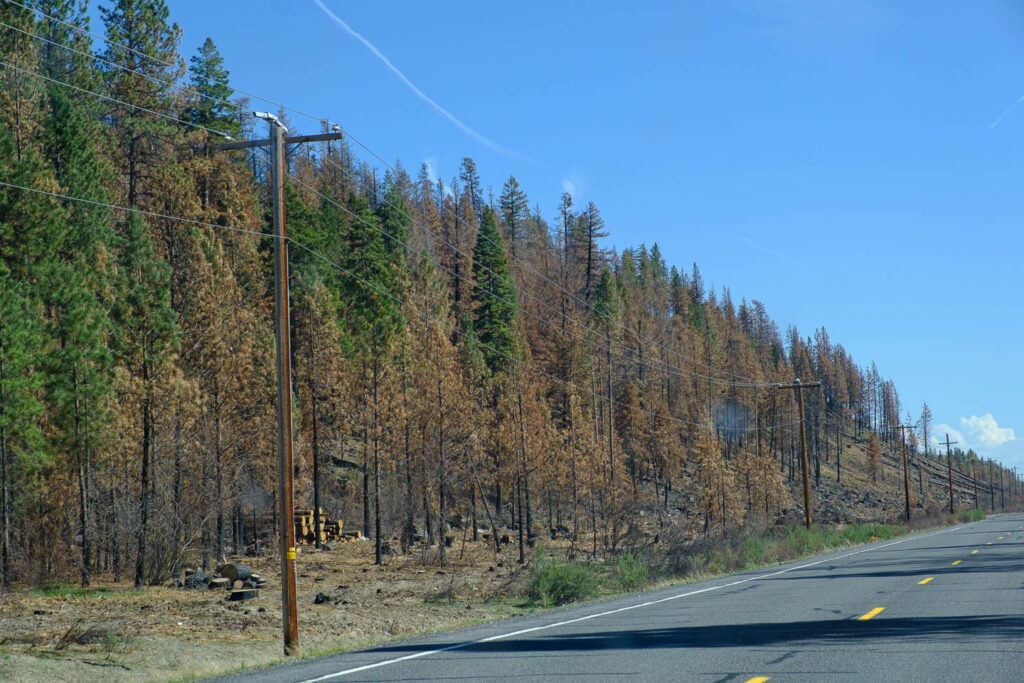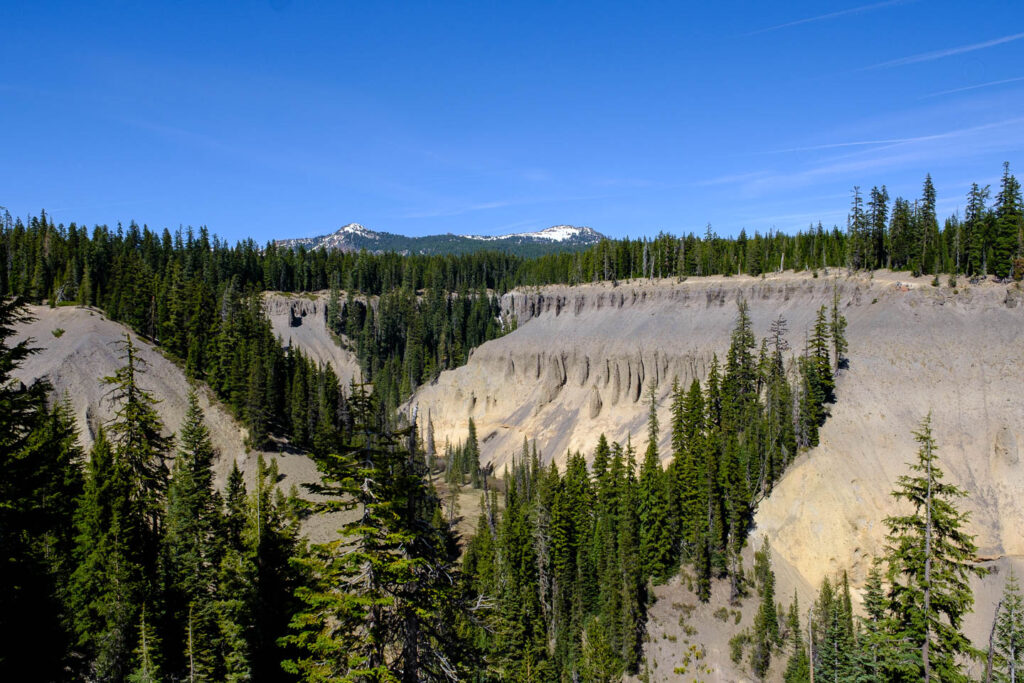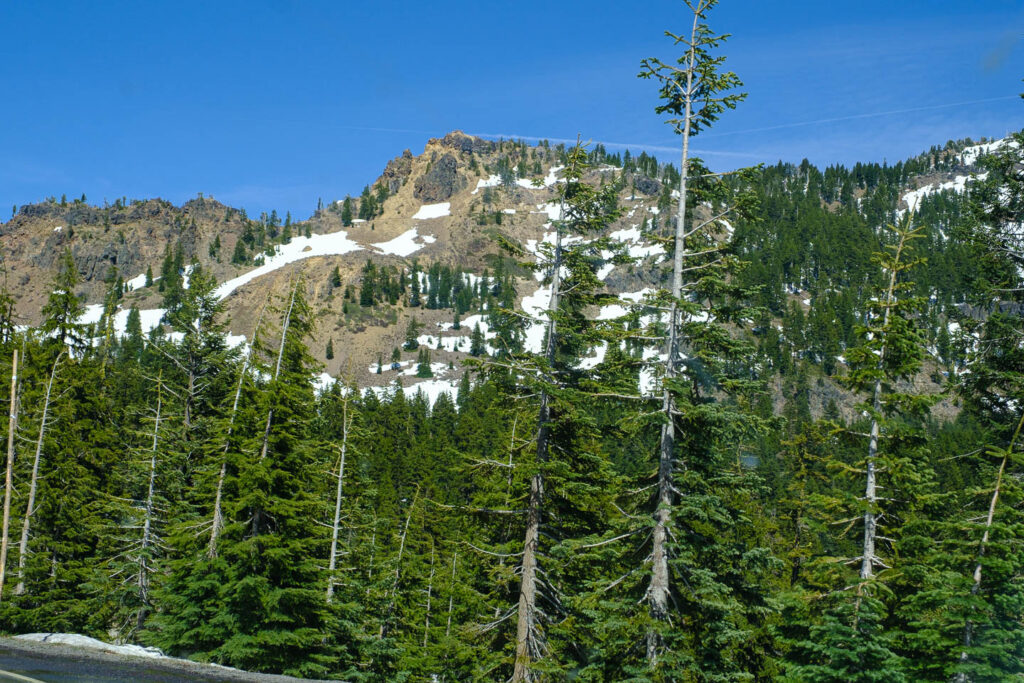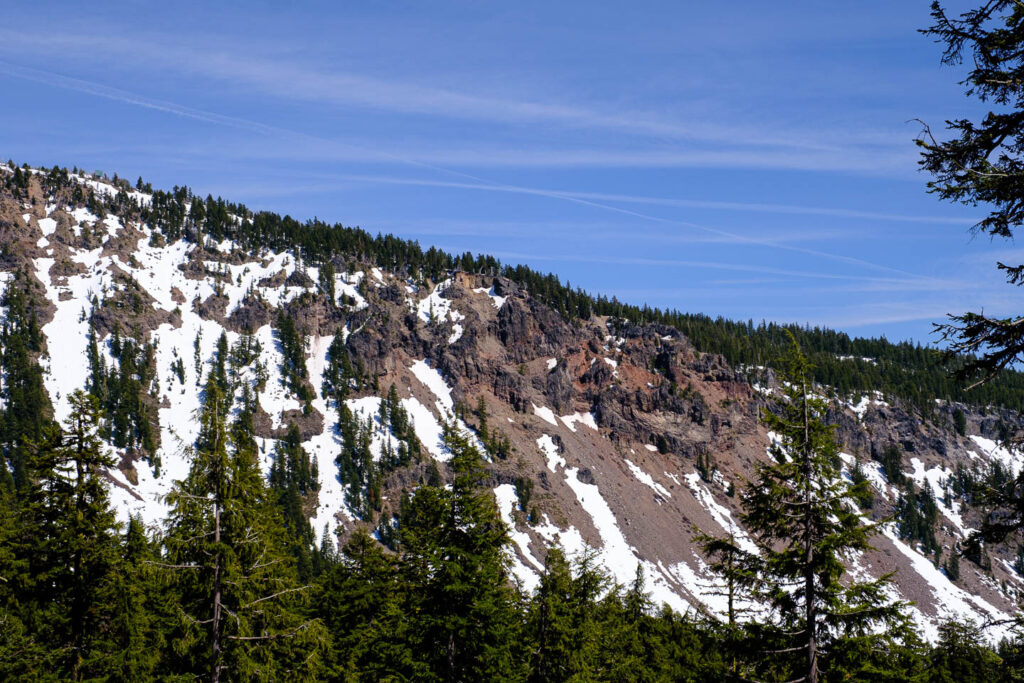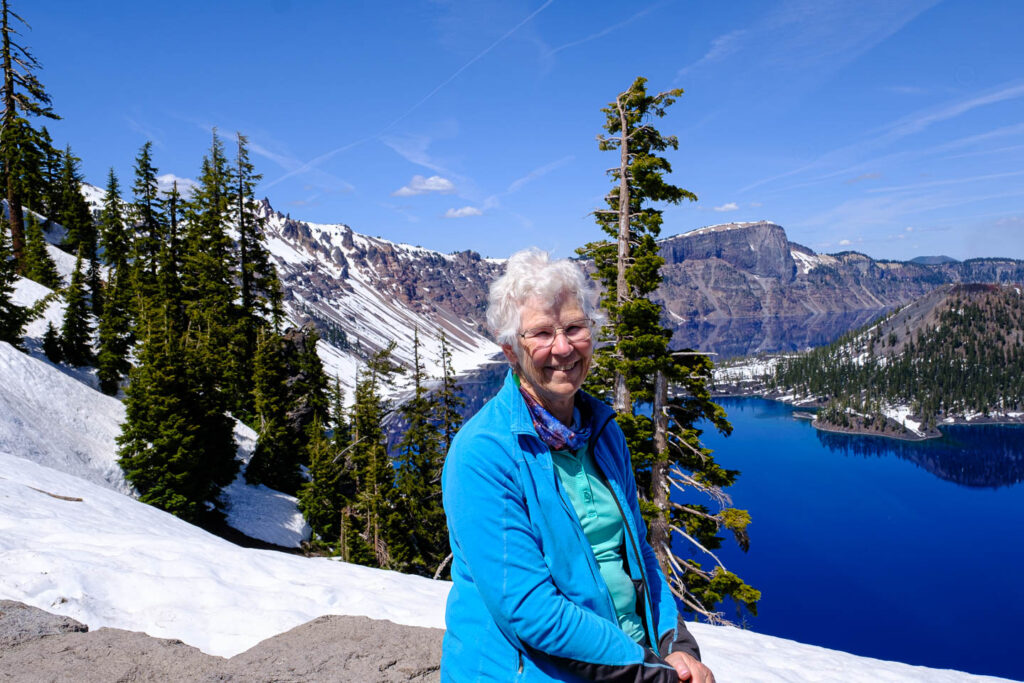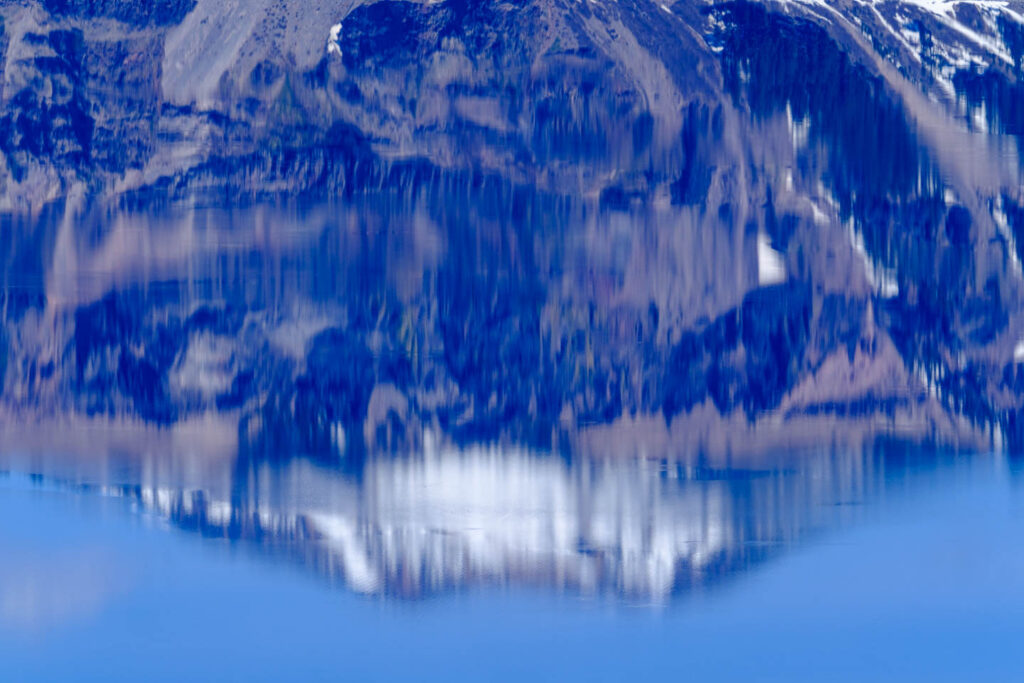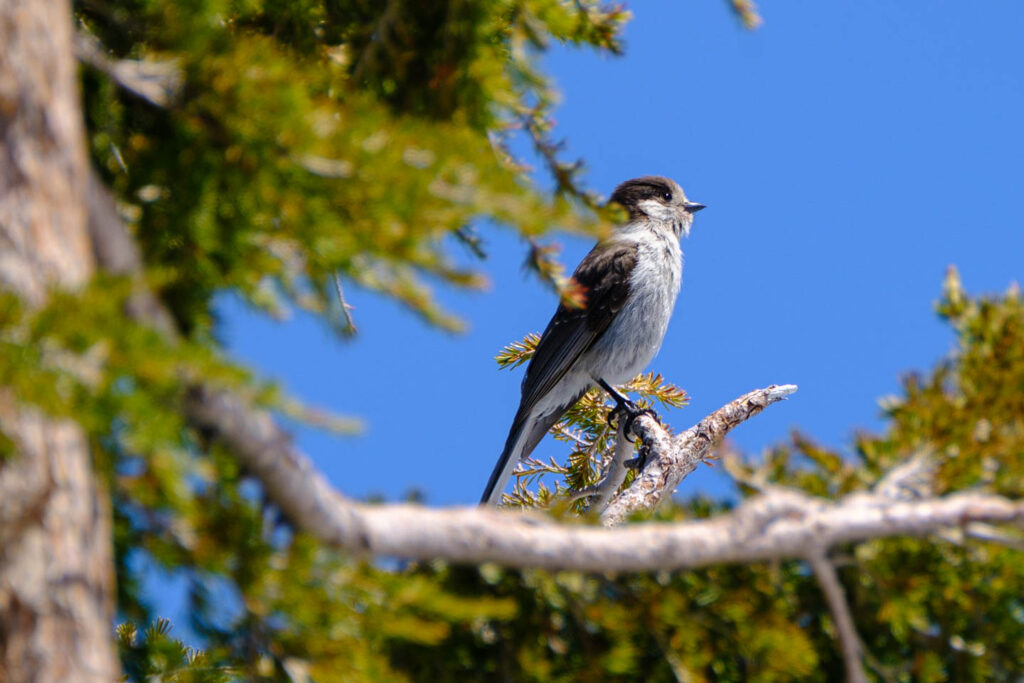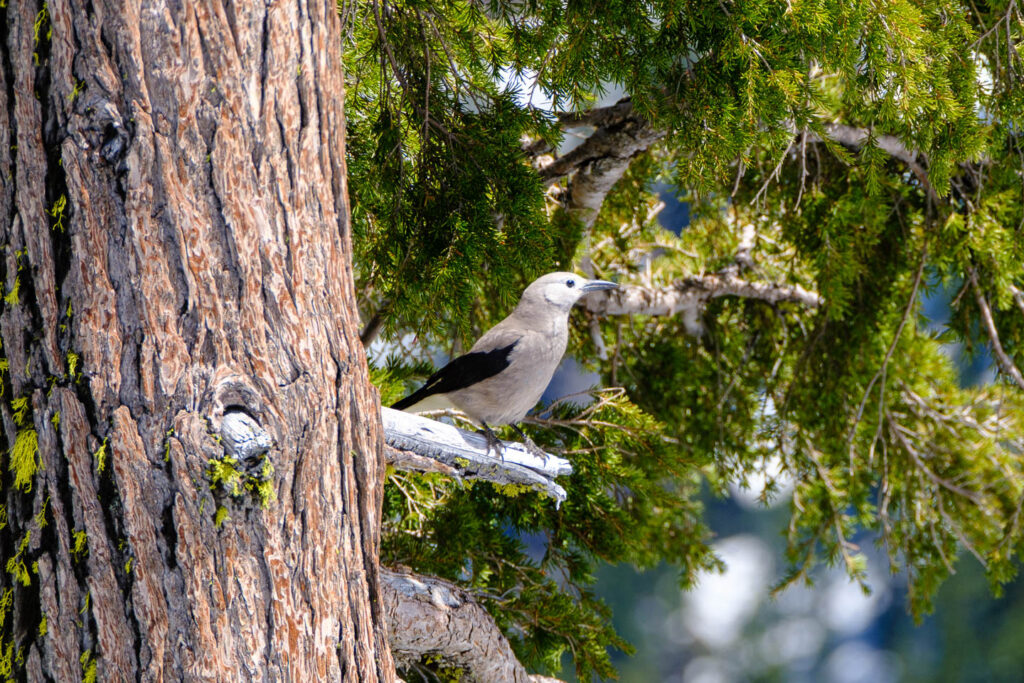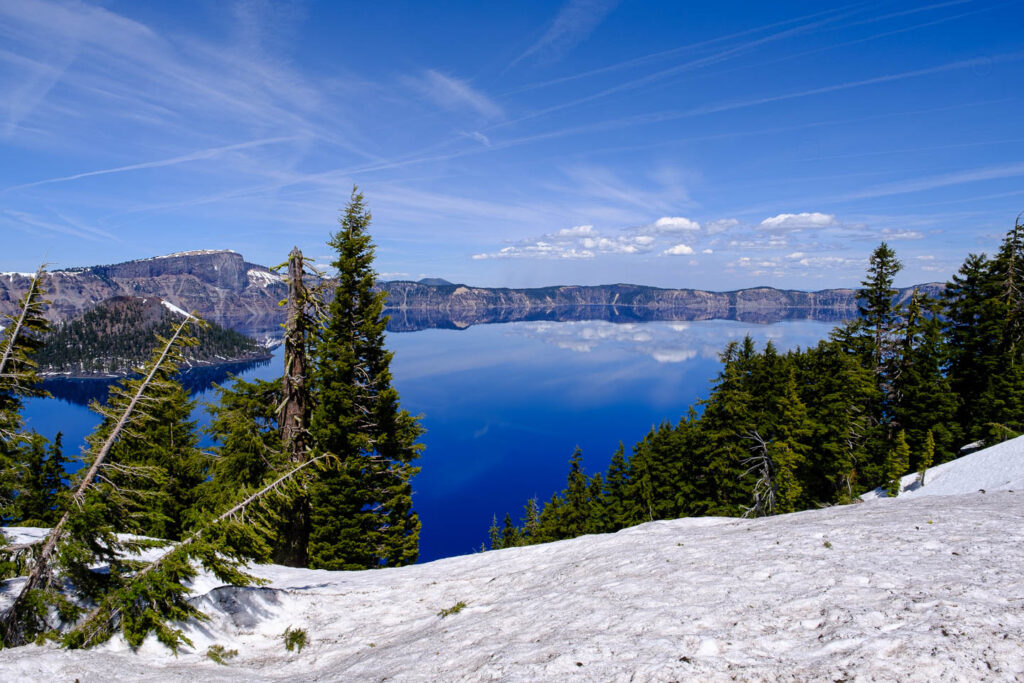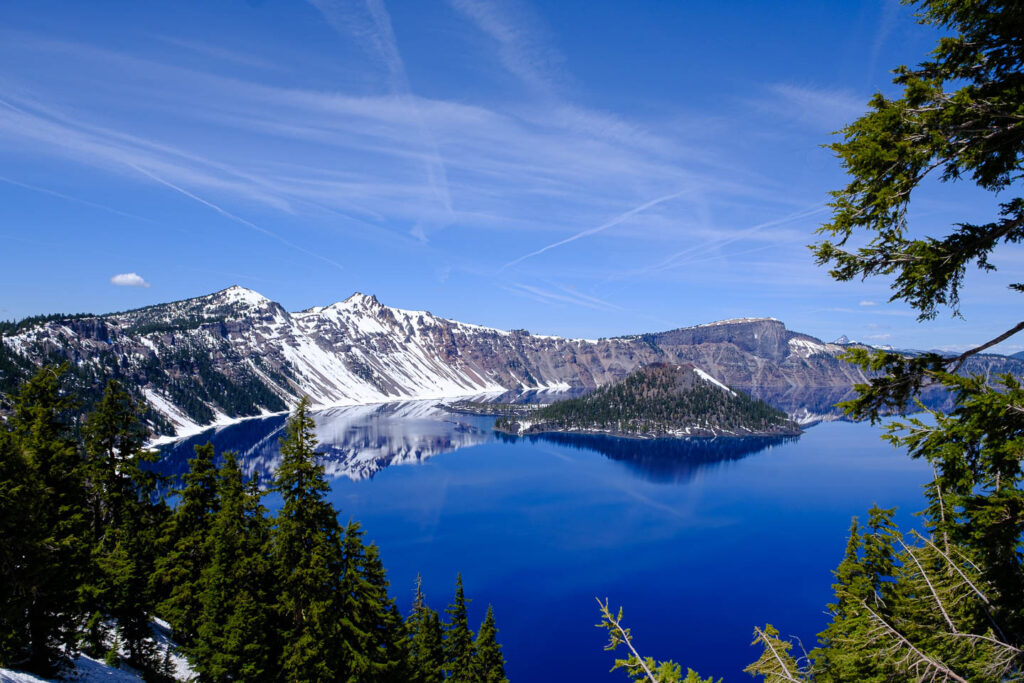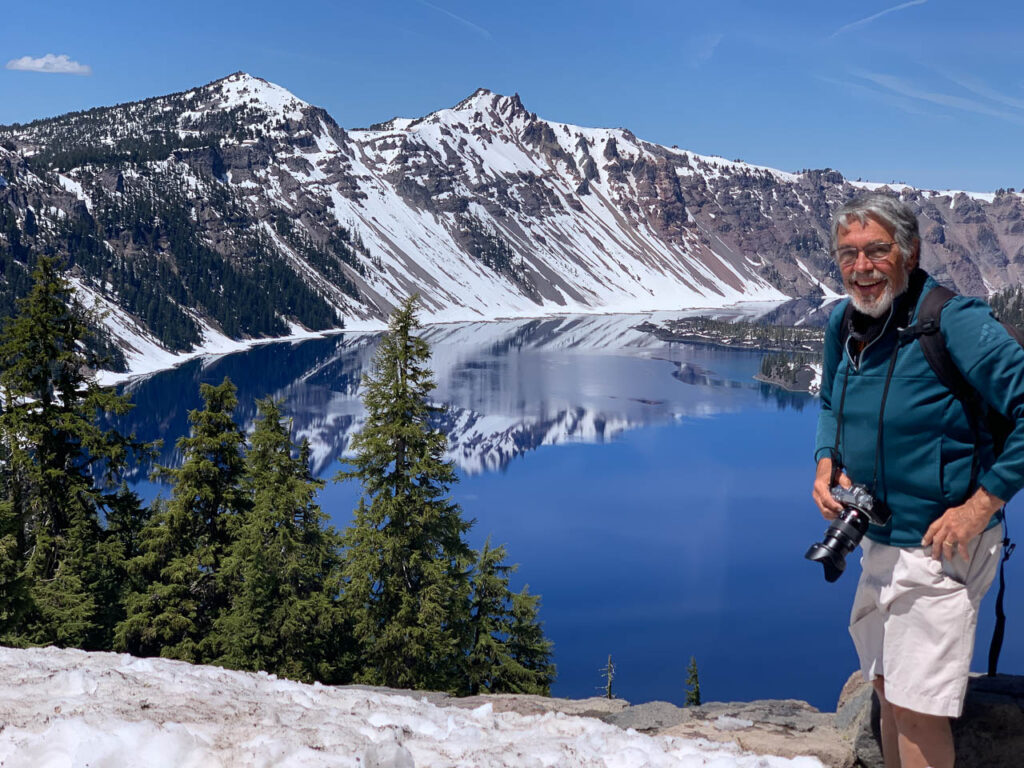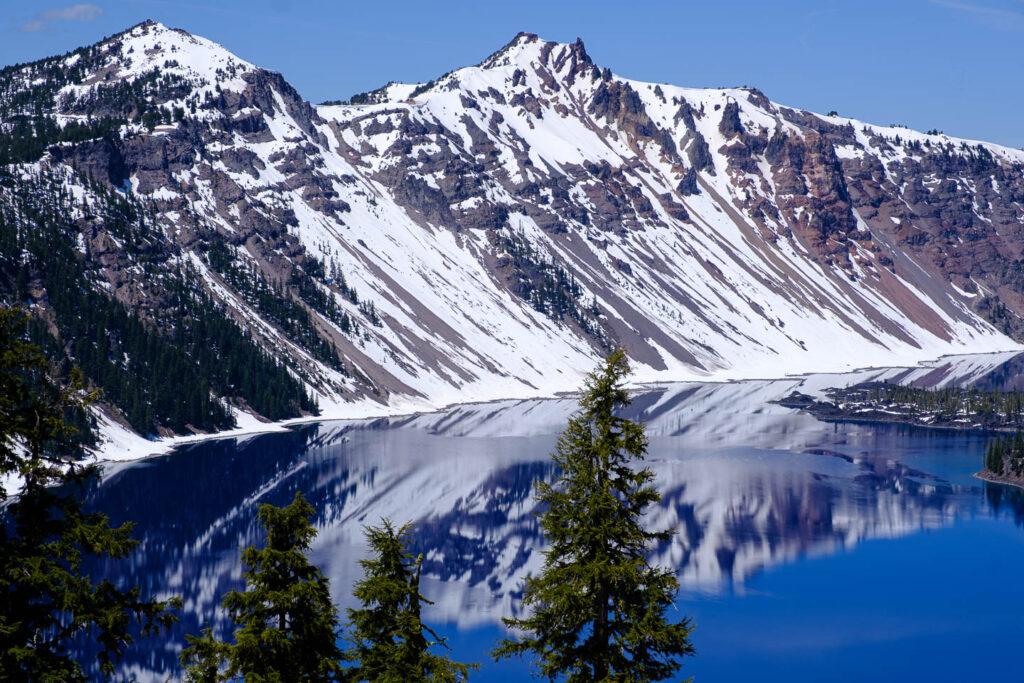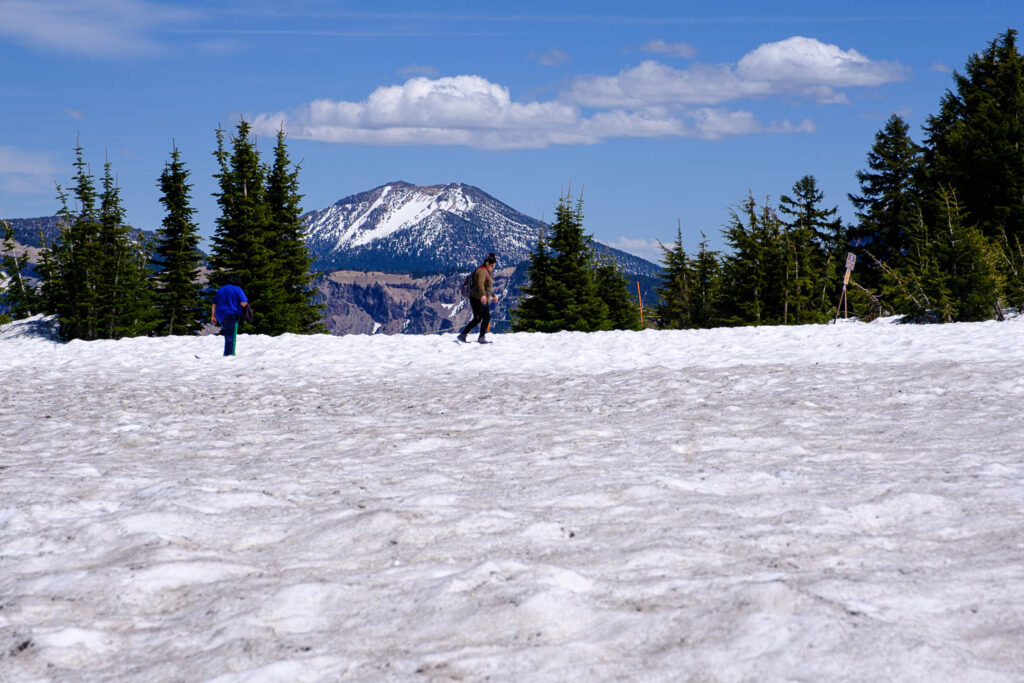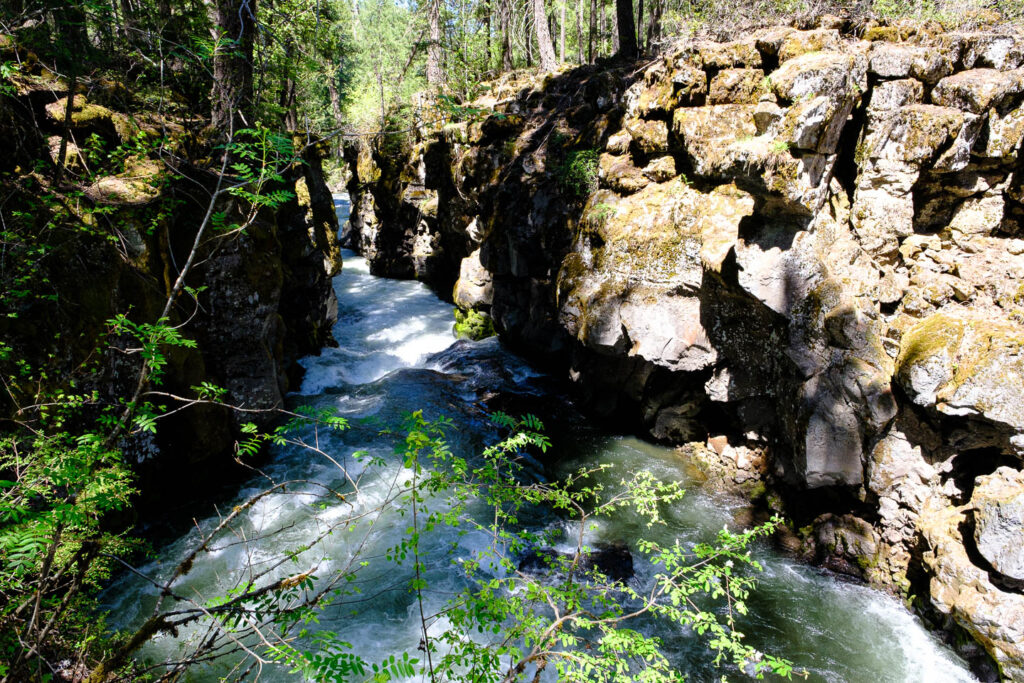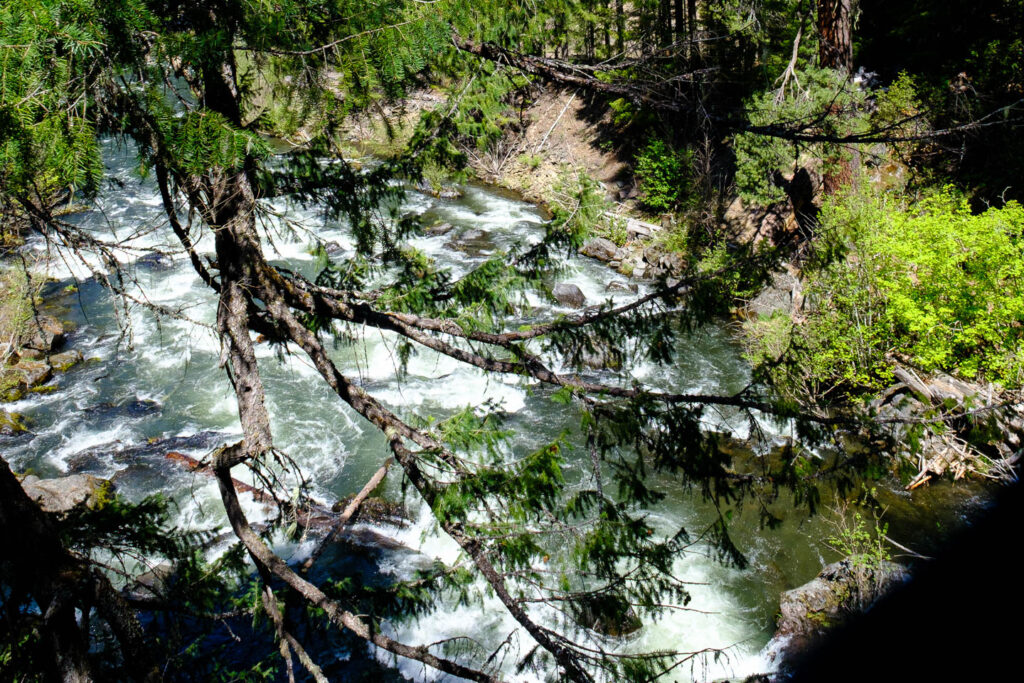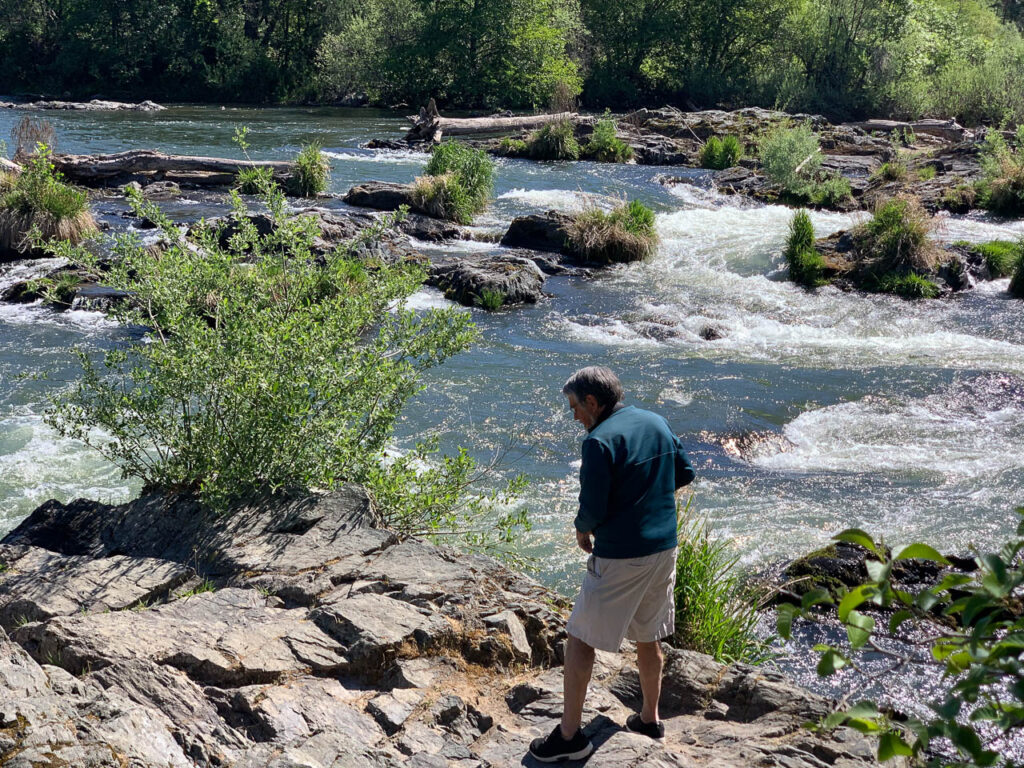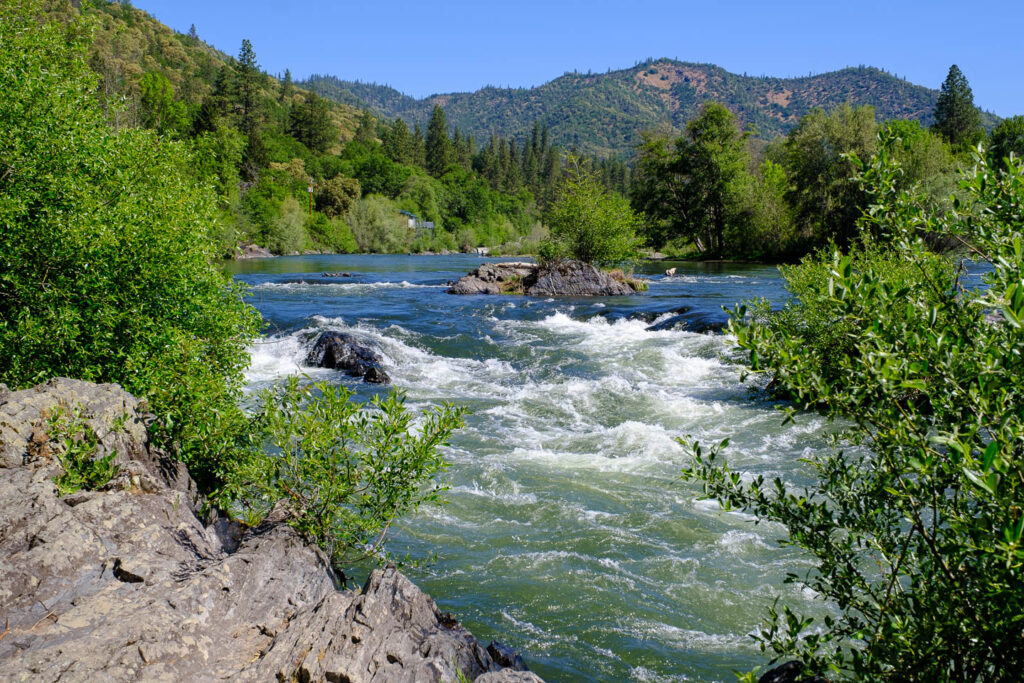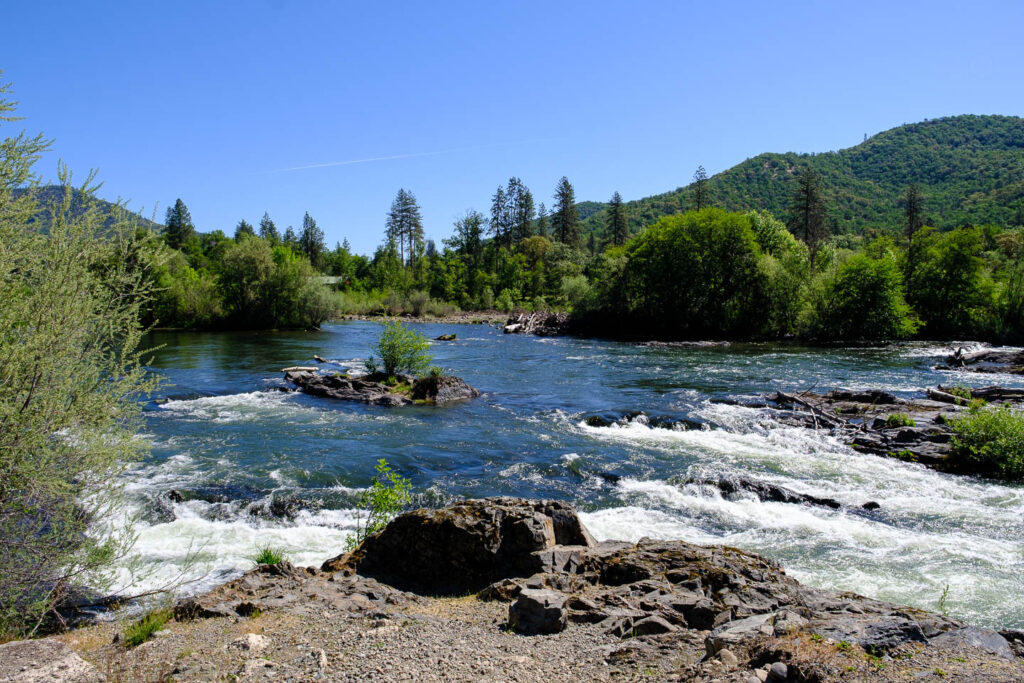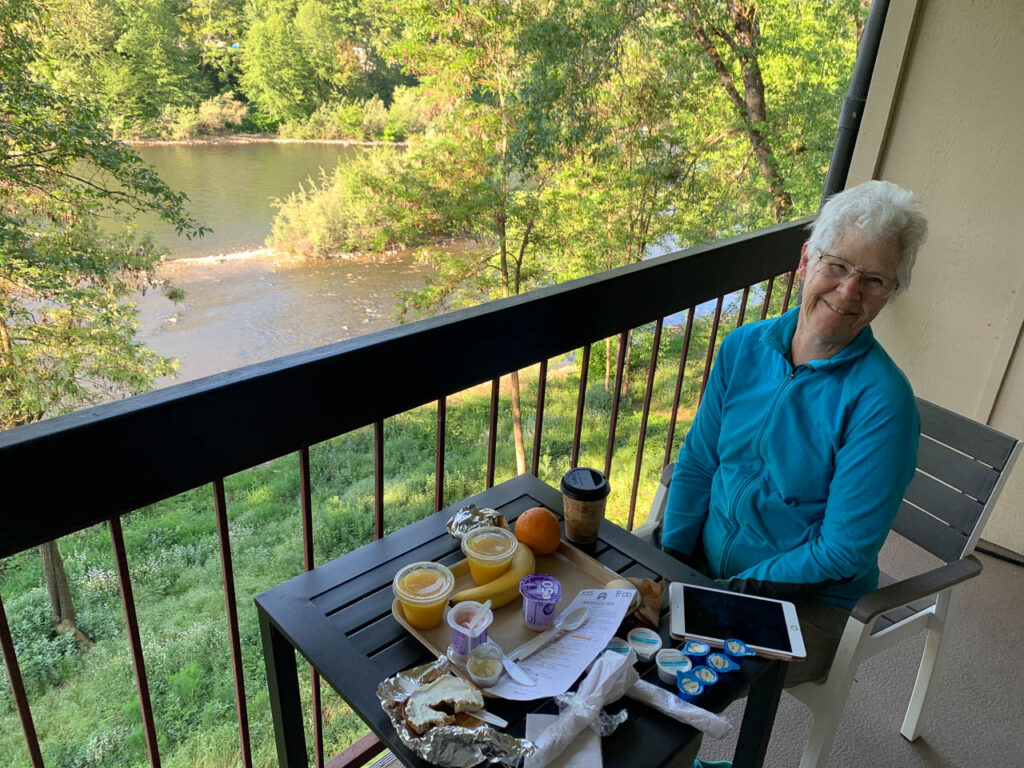Can you believe it? We didn’t hit the road until 9:30 and quit for the day at 6:30. Nine hours in total. Someone should dock our pay for such a lackadaisical showing.
The objective was simple: drive about two-and-a-half hours to Crater Lake and then come down the mountain and get to Eugene in about three hours. But of course, we expected to find something interesting on the way and indeed we did.
First of all, our route both eastbound to Crater Lake and westbound to Eugene passed through Oregon’s Cascade Range, climbing from a few hundred feet above sea level to as high as 5,000 feet on the road and 6,000 feet at Crater Lake. I’m no tree guy, but I believe many of the conifer stands we saw were Douglas Fir trees. In between the mountains the road passed through flat farmland and small towns. Nothing we saw gave the impression of great wealth, but the scenery was most satisfying.
We saw several areas in the mountains that showed the effects of recent forest fires, something we easterners hear about but, like disasters that don’t directly affect us, we treat with passing interest. It’s one thing to see burned trees; they’ll grow back eventually. But to see, as I did, a cellar hole with a, let’s say “modest”, house trailer parked next to it brings it home to human reality.
The route from Grant’s Pass to Crater Lake followed the Rogue River whose source is largely snow melt from Mount Mazama, the collapsed volcanic top of which is Crater Lake. A beautiful river. We stopped a couple of times for a quick walk. The Rogue River Gorge, where the river is confined to a passage of maybe 15 feet, was particularly impressive.
We made a stop, thinking it would provide a scenic view of the river, but found only a series of wall panels describing the Applegate Trail. A guy named Applegate in the 1850s forged a trail from the Columbia river south and east for about 500 miles, largely following the Rogue. The intent was to find an easier path for Oregon Trail pioneers to follow instead of the more dangerous path down the Columbia.
Before the pioneer invasion, French and British fur traders had made the Rogue their home base starting in the 1820s. (Don’t footnote me as an expert on Rogue River history; I’m winging it a bit based on my memory of those plaques.) The Gold Rush of the 1850s brought even more settlers and exploiters to the region.
The nineteenth century seems to me to be a real mixed bag, historically. On the one hand, the 1800s, starting with the Louisiana Purchase and Lewis and Clark’s exploration, the Hudson Bay Company and fur trading opened up what became the western half of the United States. Technological advances in transportation (steam locomotion) and communication (telegraph) brought unparalleled change to the world. We think the 20th century was a big deal and that the 21st century advances are even more profound. But really a Tesla is just a refinement of Fulton’s steam engine and the Internet is just a refinement of the telegraph. Imagine what it was like for people, goods and information to travel no faster than a horse or a person walking to railroads and steamships and near instantaneous dissemination of information.
The other side of the 19th century, which we see just about everywhere we go, here and abroad, is the exploitation of indigenous peoples by those who possess 19th Century technology. The technology gives invaders the means to subjugate the indigenous people but also the motivation to exploit the natural resources contained in the land that for thousands of years was home to native populations.
The name “Rogue” came from French trappers who viewed Indians as a “rogue” people. The rogue River War of 1855-1856 spelled the end of Native people. It followed years of skirmishes and wars that left many killed and diseased. One panel in the exhibit claimed that the U.S. government paid over $100,000 to bounty hunters for killing Native people.
It’s easy to tsk-tsk those terrible trappers, gold seekers and pioneers. Didn’t they know better? They came from a different time and culture so it’s too simple minded to think that you and I, in that situation, would have seen the world much different than those we criticize. It’s a sobering thought.
Enough history and philosophizing.
Take a look at the pictures of Crater Lake. We had an absolutely marvelous day – clear blue skies with temps in the 60s. Much of the park was still closed due to snow but the part that was open gave us great views.
Tonight, we’re in Eugene at the Valley River Inn. Why here? First, it’s about two hours from Portland and located so we had a reasonable travel day today – logistics. Coincidentally, it’s home to the University of Oregon, the first school to which Reagan received an acceptance letter. She’s never been here and is headed for University of California San Diego. We figured since we were in the neighborhood, we’d see what she’s missing!
We picked this hotel because the gal behind the desk last night said, “Oh yes, the Valley River Inn. I stayed there when I was in the eighth grade and we went shopping in Eugene. It was a really neat place, as I recall.” She might have thought that was a long time ago but not from the perspective of old folks like us. And it is a really neat place, it turns out. Tonight’s room is a duplicate of last night’s in that both have a balcony that overlooks a swiftly-flowing river.
Tomorrow, the end of our road tripping. We’ll explore Portland Friday afternoon and Saturday and then board ship Sunday morning.




